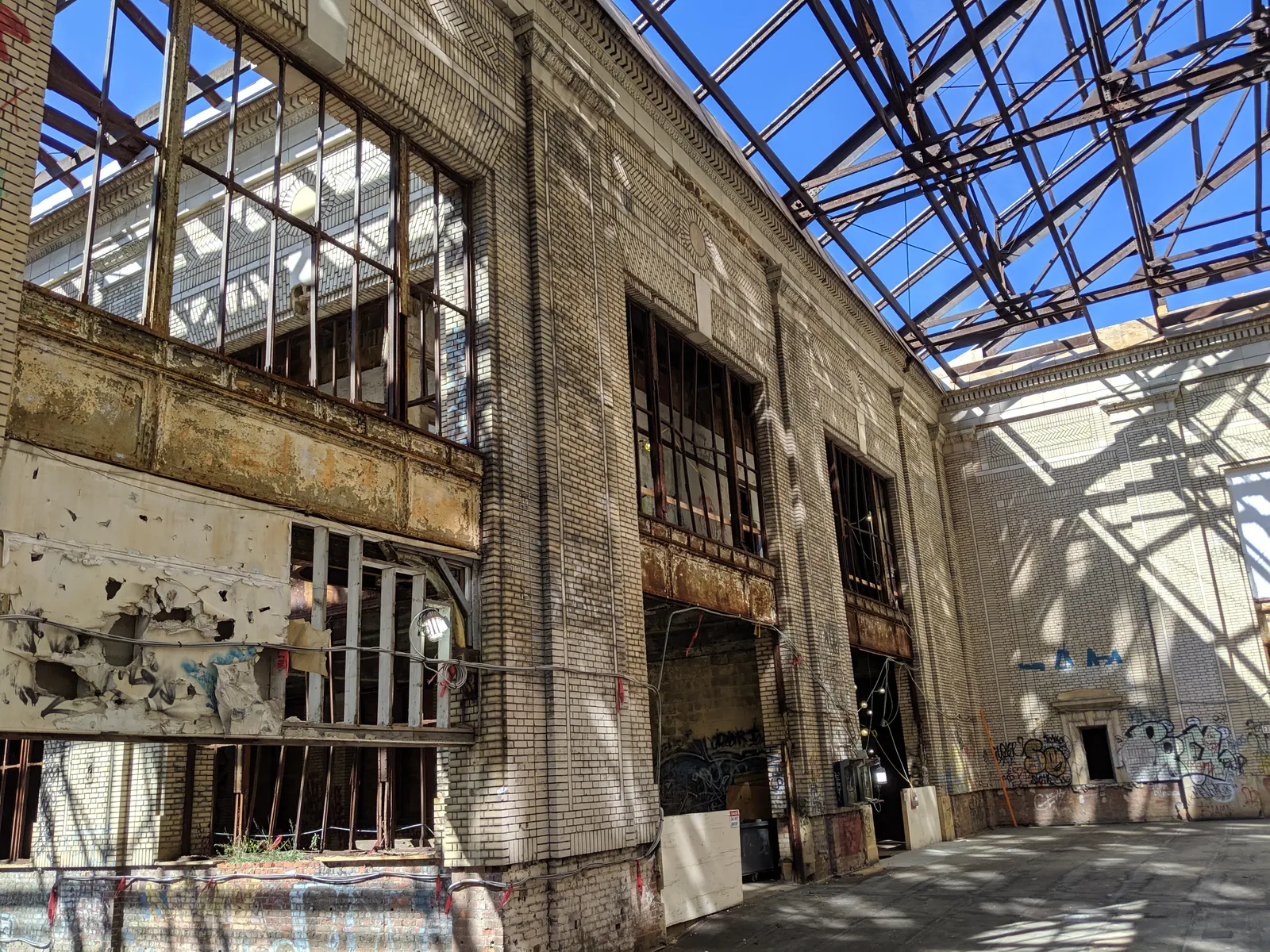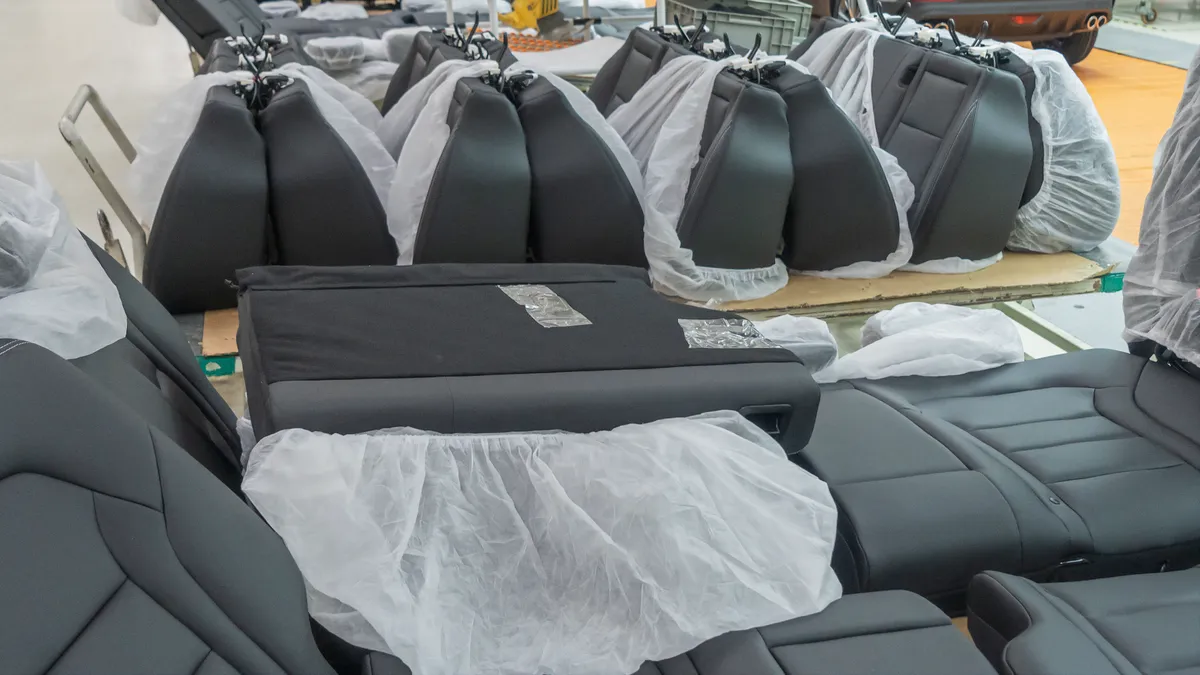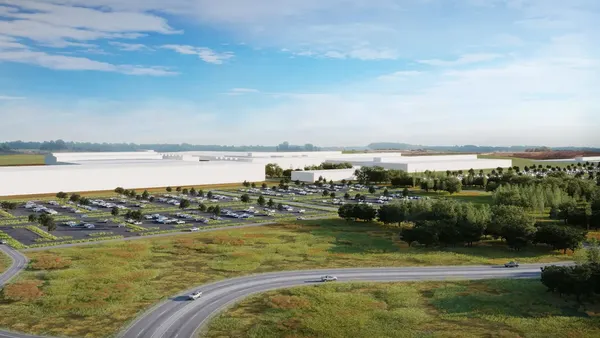Dive Brief:
- Ford Motor Co. is reopening Detroit’s historic Michigan Central Station after an extensive, multi-year restoration project, the automaker announced in a press release.
- Ford purchased the crumbling train station building in 2018 with the goal of restoring it and transforming it into a technology and innovation hub for advanced mobility projects. The automaker will be among the building's first tenants when employees from its Ford Model e and Ford Integrated Services teams move into newly renovated office spaces later this year.
- Michigan Central Station, which first opened in 1913, will also play a key role in attracting other companies to Detroit, according to Ford.
Dive Insight:
The 640,000-square-foot innovation hub will include cultural, technology, community and convening spaces designed to foster collaboration between companies, universities, startups and other stakeholders. It will accommodate both larger tenants and established companies, according to Ford.
Ford plans to have 1,000 people working across the revitalized Michigan Central district by the end of the year, with around 2,500 employees working there by 2028. The Michigan Central district includes a renovated building dubbed “The Factory,” which was the first building to open at the site. It will serve as office space for more than 250 of Ford’s autonomous vehicle business and operations team members.
Serving as a tech and innovation hub, Ford will also have collaboration space available at Michigan Central for other Southeast Michigan-based employees to use.
"Michigan Central means a great deal to us all. In many ways, this building tells the story of our city,” said Ford Executive Chair Bill Ford, in a press release. “Over the past six years, Ford Motor Company and teams of forward thinkers, designers, community leaders, and more than 3,000 skilled tradespeople have worked to bring this landmark back to life.”
The technology focused areas of Michigan Central district will include aerial mobility, energy equity and multimodal logistics, according to Ford. The area surrounding Michigan Central will offer a testing environment that includes the first electrified public road to test wireless electric vehicle charging technology.
The Michigan Central district also includes a policy-enabled “Transportation Innovation Zone,” which allows for the fast-track testing of mobility related technology pilots in Detroit.

The once abandoned and crumbling Michigan Michigan Central Station stood as a symbol to the city’s economic decline for decades after it closed in January 1988. But it now represents rebirth as a hub of innovation for the automaker, startups and other established companies.
Ford said its construction teams used technology to ensure the renovations were accurate to historical standards. The company and its partners also sourced more than 600 tons of limestone for the building’s exterior from the original quarry in Indiana where it was sourced from over 100 years ago.
For other restoration projects on the Beaux-Arts building, Ford turned to its expertise in automotive research, engineering and manufacturing technology, including the use of 3D computer-aided design scanning and printing techniques.
Ford used the 3D scans to create historically accurate reproductions for parts of the building that could not be restored. Among the work, Ford’s manufacturing technology team 3D printed over 500 rosettes and and other ornamental features using a lightweight polymer.
During the course of the restoration project, Ford said that 3,990 cubic yards of debris were removed from the building and 3.5 million gallons of water was pumped from the basement.
Ford will host a special event on June 6 to commemorate the project’s completion. It will be open to the public for tours from June 7-16.
“Michigan Central will advance mobility solutions that help solve some of society’s biggest challenges,” said Joshua Sirefman, CEO of Michigan Central, in the press release. “It will also be a powerful catalyst for growth and an economic engine for this region.”














